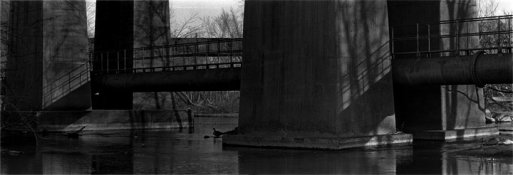tequilabong
Member
I recently purchased a Zone VI 5x7 VC head and for the past few months have been doing the split filter printing. After reading a few posts, I see that very few people are opinionated on the subject.
From what I've gathered most agree that the same results can be obtained via SFP vs. a single filter. Ok, perhaps that is true.
But my questions pertain more to using a VC head doing two exposures.....One hard, one soft...
I'm using the zone VI HEAD, with the Zone VI compensating timer.
When using a cold light and a compensating timer, don't the rules change for split filter printing? Due to the difference in the light output of the green vs blue tube?
I've noticed the time is dramatically different when using the green vs. the blue tube......one second with the green might equal 3 seconds the blue. Why is this? I allow for warmup.....(waiting for the "ready" light to illuminate before I make prints....and it can be frustratingly long)..
I've also read that two equal time expsoure of the green and blue equal one exposure of the together. How can this be true when using a compensating timer? Am I missing something?
I set my timer at two seconds, and have been doing initial printing making "two second" bursts....I say two seconds because that is what the timer is set on. But I've discovered, it is rarely the "time" indicated....
I"m following the correct procedures.....Doing the first test with just the soft, (sometimes the hard first...but does it matter?)...Deciding on my amount of time by judging the exposure on the test strip. Then laying that amount down on a new sheet, then redoing the test with the hard light.'
My intial reactions to printing this way have been very encouraging. I'm finding I rarely need to dodge/burn and the prints are looking pretty, pretty, pretty good.
One final thought or question.......When using this setup, with a compensating timer, it is completely unique from a one filter print. It seems plenty of critics of SFP claim that the same results can be had using one filter. But how is that possible when using different exposures of green and blue???

From what I've gathered most agree that the same results can be obtained via SFP vs. a single filter. Ok, perhaps that is true.
But my questions pertain more to using a VC head doing two exposures.....One hard, one soft...
I'm using the zone VI HEAD, with the Zone VI compensating timer.
When using a cold light and a compensating timer, don't the rules change for split filter printing? Due to the difference in the light output of the green vs blue tube?
I've noticed the time is dramatically different when using the green vs. the blue tube......one second with the green might equal 3 seconds the blue. Why is this? I allow for warmup.....(waiting for the "ready" light to illuminate before I make prints....and it can be frustratingly long)..
I've also read that two equal time expsoure of the green and blue equal one exposure of the together. How can this be true when using a compensating timer? Am I missing something?
I set my timer at two seconds, and have been doing initial printing making "two second" bursts....I say two seconds because that is what the timer is set on. But I've discovered, it is rarely the "time" indicated....
I"m following the correct procedures.....Doing the first test with just the soft, (sometimes the hard first...but does it matter?)...Deciding on my amount of time by judging the exposure on the test strip. Then laying that amount down on a new sheet, then redoing the test with the hard light.'
My intial reactions to printing this way have been very encouraging. I'm finding I rarely need to dodge/burn and the prints are looking pretty, pretty, pretty good.
One final thought or question.......When using this setup, with a compensating timer, it is completely unique from a one filter print. It seems plenty of critics of SFP claim that the same results can be had using one filter. But how is that possible when using different exposures of green and blue???
Last edited by a moderator:











